Ta Van Village Sapa: Everything You Need To Know For Your Trip
Ta Van is one of the most interesting destinations in Sapa – which still retains its original and bold cultural features. If you are a lover of traditional things, national values, then immediately pocket the experience of Ta Van village, Saparight below to have more motivation for the journey.
Where Is Ta Van Village?
Ta Van Village is in the Ta Van commune, situated approximately 12 kilometers away from the town of Sapa.
Translated from the Hmong ethnic language, Ta Van means a large arch, which refers to the village leaning against the Hoang Lien Son mountain range with the Muong Hoa stream meandering in front.
This village has been a longstanding settlement for the Giay ethnic community, and it also accommodates residents from the Red Dao and Hmong groups.

Ta Van Village
Ta Van Village History
According to records, the Giay people settled in Ta Van first, around 300 years ago. The San family was the pioneer, followed by Vang, Lu, and others. They began with a few thatched-roof houses scattered along hillsides, riverbanks, and streams in the valley.
As time passed, more ethnic groups like the Hmong and Red Dao joined, creating the diverse community that exists today in Ta Van.
Despite living alongside different ethnicities, the Giay people have held onto their unique cultural heritage; this includes customs, traditions, beliefs, and festivals that make their village special.
Initially, Ta Van had only a handful of houses, but now it's a bustling community with various ethnicities contributing to its vibrancy.
It not only offers beautiful scenery but also stands as a living example of the rich cultural exchange with their neighbors over the years.
What’s The Best Time To Visit Ta Van Village?

What’s The Best Time To Visit Ta Van Village?
Ta Van Village offers unique beauty throughout the year, providing visitors with captivating experiences every season.
September and October mark the ripening season for the ice fields on the terraced slopes. Ta Van Village is vibrant yellow during these months.
From December to February, the weather is coldest, and there may be frost and snowfall. This period also witnesses cherry and peach blossoms, creating a poetic and enchanting atmosphere throughout the village.
In April and May, the terraced fields are flooded and reflect the sky like a giant mirror.
During the summer months, from June to August, Ta Van offers lush green fields. But it also brings rain.
Choosing the best time to visit Ta Van depends on your preferences. If you have never been here, I recommend September to admire the signature beauty of the golden rice fields.
Why Should You Visit Ta Van Village?

Visit Ta Van Village
Ta Van Village is a special place you shouldn't miss if you love unique experiences or want a peaceful break from a busy life.
The village has simple wooden houses, small charming paths, and beautiful green rice fields that attract people looking for a slower pace and a serene atmosphere.
For many years, the locals in Ta Van have treated visitors like friends, letting them come and go without disrupting the peaceful life in the village.
The impressive landscapes, a cool and refreshing climate, and deep-rooted cultural traditions make Ta Van a worthwhile destination for everyone.
What To Explore In Ta Van Village?
Ta Van does not have many tourism activities. So when you come here, you’ll witness the wild natural beauty and immerse yourself in the daily lives associated with the habits of the people here.
Terraced Fields

Terraced Fields
The outstanding beauty of Ta Van Village is incomplete without mentioning its breathtaking terraced fields. These meticulously crafted terraced fields, formed by the hands of generations of locals, wind around the hills and mountains, spreading out endlessly.
Standing amidst this vast expanse of land, breathing in the pureness of the mountainous region, one can't help but feel a sense of connection with nature.
It's as if you've stepped into a place untouched by industrialization, free from the hustle and bustle of urban life.
You can visit the terraced fields in Ta Van Village during any season, and each offers a different picturesque backdrop for everlasting check-in photos.
In the season when locals guide water into the fields (April & May)
Not flashy, gorgeous like gold in the ripe rice season, terraced fields in the pouring season have a muted tone. The terraced fields resemble colossal silver-white mirrors, reflecting the stunning mountainous scenery.

Terraced Fields In April
First is the brown color of the plowed land. When the water follows the streams to the highest fields and overflows to the lowest fields, it is dyed by the white of the water and the brown color of the banks.
In the summer (June & July)
The terraced fields showcase vibrant green rice paddies, a refreshing sight for sore eyes.
Fields cover the hillsides, spill into the valley, surrounding the villages, and rice embraces the romantic Muong Hoa stream. Everywhere is green and green, creating a natural landscape full of vitality.
In the autumn (September & October)
Autumn transforms the fields into a sea of golden harvests, attracting many tourists eager to witness the shining golden waves of rice.
As the evening falls, you'll see local children herding buffaloes back home, a sight not often seen in modern times.
Ethnic Minorities' Houses

Ethnic Minorities' Houses
Ta Van Village holds a deep and lasting impression, particularly through its ancient houses that stand gracefully along the roadsides.
While these houses are referred to as ancient, they are remarkably well-built. Notable among these houses are the ones belonging to Mr. Lo A Muc.
Mr. Lo A Muc's house, constructed in 1934, is a true testament to its age, showcasing the characteristic wooden foundation of the Giay ethnic group.
Upon entering, you'll find an ancestral altar crafted from po-mu wood, featuring the distinctive and ancient structure typical of the ethnic groups.
During my travels, I find joy in staying in a local house (homestay). It’s great to immerse myself in the daily lives of the local people and learn about their living conditions, daily routines, and traditional customs.
This village offers an authentic experience where you can sit by the fireplace in a traditional stilt house, savor a cup of corn wine, and listen to the elderly share ancient stories about their village.
Giay Ethnic Costumes

A Giay Women
The traditional clothes worn by the Giay people in Ta Van are simple but hold a charm that reflects their culture.
Women usually wear short, wide-legged pants that reach their ankles, paired with broad tubes. They style their hair with a headband and often carry embroidered fabric pouches. Men wear pants and shirts and wrap scarves around their heads.
When visiting Ta Van, it's a fun experience to try on the traditional clothes of the local Giay community. Putting on the dresses worn by Giay young women/men makes you feel like you're part of the village.
You can easily find a clothing rental shop in the village. Against the backdrop of the green terraced fields, the vibrant colors of the traditional costumes create a stunning contrast.
May Bridge

May Bridge
The May Bridge in Ta Van Village has gained widespread attention and international fame thanks to its unique and captivating charm.
Traditionally, villagers in Ta Van would construct small bridges to cross streams using forest vines and thin wooden planks.
These bridges are made with skillfully woven strands of forest vines. However, as safety concerns grew, many were replaced with iron ones.
Signature of May Bridge
The May Bridge in Ta Van is a rare survivor, preserved for its historical significance and the captivating scenes it offers. Tourists flock to witness this remarkable structure and create enchanting photos for social media.
The beauty of the May Bridge lies in its simplicity and unassuming nature. The structure is completed with intricately woven strands of clouded yarn, with thin planks spaced approximately 20 cm apart.

Walking On The May Bridge
Despite the challenges of traversing it, especially during the rainy season when the wooden planks become slippery, the bridge remains a popular attraction.
The sense of adventure and thrill in walking across a suspended bridge over a flowing stream is an experience that captivates the younger crowd.
The best time to visit
If you want to explore the simple beauty of the May Bridge in Ta Van, it's best to visit early in the morning. At this time the town is still immersed in the early morning mist, with wisps of clouds drifting across the sky.
The scene around the May Bridge becomes incredibly poetic during this time. You can also catch glimpses of the distant and dreamy Muong Hoa stream from the bridge.
Furthermore, crossing the May Bridge opens a path to the Giang Ta Chai waterfall, where the cascading water roars from above. You'll see a thunderous yet tranquil scene within a serene forest setting.
Muong Hoa Stream

Muong Hoa Stream
Nestled in the serene Muong Hoa Valley, the Muong Hoa Stream begins its journey from the Northwestern mountains. It starts at the foot of the grand Silver Waterfall, where cascading waters roar and surge throughout the year.
Flowing gently and silently for 15 kilometers, the Muong Hoa Stream winds through the entire Muong Hoa Valley, passing through the villages of Lao Chai, Ta Van, and Hau Thao and concluding its journey in Ban Ho.
The beauty of Muong Hoa Stream
As one of the most beautiful streams in the untouched and vast Northwestern region, the Muong Hoa Stream boasts an impressive beauty from above.
This watercourse, referred to as the Beauty of Sapa, resembles a gigantic serpent gracefully winding its way through the curves of the Muong Hoa Valley, meandering around the terraced rice fields.
This stream is a gathering place for 22 larger and smaller streams originating from lush green forests or rugged and magnificent mountain crevices.
This network ensures that the Muong Hoa Stream is consistently filled with pure and refreshing water throughout the year.

The Beauty Of Muong Hoa Stream
Muong Hoa Stream is also the beginning of love stories.
Not only does the Muong Hoa Stream possess a poetic beauty, but it also is a place for fate to be sealed among the young men and women of the village.
During the early days of spring, with the refreshing air, young men and women from the village come together at the stream to catch fish. Laughter and joy resonate through the air as they engage in playful banter along the banks.
In fact, catching fish serves as a mere pretext, as these young men often take advantage of the opportunity to hold hands with the girls they fancy.
Hand in hand, eyes meeting amidst the serene and gentle stream, there is an unmatched romantic ambiance.
With stories of affectionate moments passed down through generations, this stream has weaved countless tales of love for the couples in the rustic village.
Local Specialties

Thang Co
Thang Co
Thang Co is an indispensable dish in the culinary landscape of the Northwestern ethnic groups, particularly in the highland markets.
Originally made with horse meat, it has evolved to include beef, buffalo, and pork, resulting in various versions across different ethnicities.
The traditional Thang Co pot contains horse meat, heart, liver, blood, and 12 herbs and spices. This rich and hearty broth, infused with the essence of various meats, is then served hot, often with an array of fresh vegetables for dipping.
Bac Ha Armpit-clip Pork
Bac Ha pork is a distinct breed of pig that roams freely in natural surroundings, feeding on wild vegetation and roots. Raised for approximately a year, these pigs, at their largest, weigh only around 20kg.
The meat is firm, sweet, and surprisingly lean, lacking the gaminess of conventionally raised pork. This pork is used to create signature dishes such as whole roasted pig and grilled pork skewers.

Bac Ha Armpit-clip Pork
Grilled Stream Fish
Ta Van stream fish comes in various types, and the remarkable fact is that it lacks any fishy taste. The fish is either grilled over open flames, enjoyed hot off the grill, or fried and crisped with tomatoes, curry powder, and black pepper.
These sizable fish, about the size of 2-3 fingers, are often greenish in color. The fish is renowned for its succulent meat and thin, crispy skin, best enjoyed with a dipping sauce made from fragrant local fish sauce, lime, and chili.
Grilled Village Chicken
Village chicken is raised in free-range conditions, foraging for its food in the mountainous regions. The meat is known for its resilience, sweetness, and unique flavor. A must-try dish is grilled chicken with lime and pepper.
This flavorful dish is best enjoyed by tearing off a piece of succulent chicken with your hands and dipping it into a tangy sauce made from lime and chili.
Ta Van Fair

At Ta Van Fair
When you visit Ta Van, don't miss the lively and colorful Ta Van fair on Sunday! The fair is filled with local specialties and charming souvenirs, perfect for gifts.
Every weekend, ethnic minorities gather and buy, sell, and exchange goods with each other. In a fair, traditional costumes steal the show, proudly displayed by locals.
You'll also find a mix of crafts, textiles, jewelry, and accessories, each crafted with care and cultural motifs passed down through generations. Everything you see has the mark of local craftsmanship.
Taboos You Need To Know When Visiting Ta Van

Taboos You Need To Know When Visiting Ta Van
When visiting Ta Van, it's essential to be aware of local customs to show respect to the community. Here are some taboos you should keep in mind:
Avoid wearing white hemp clothes. White is associated with mourning and funerals, so choose other colors for your visit.
During spiritual activities or rituals, outsiders are not welcome. A bunch of green leaves outside the entrance signals that the ceremony is in progress.
While moving around the village, maintain a subdued and respectful demeanor. Unlike bustling city parks, these rural areas value tranquility and harmony.
In local houses, the central area is designated for worship, and guests are not allowed to sit there.
In the Hmong tradition, the main seat at the table is for parents, even if they are no longer alive. Guests should not occupy this sacred seat.
Inside a traditional Hmong house, the large central pillar is the dwelling of spirits. Refrain from hanging clothes on it or leaning against it.
Pointing fingers forward while talking is disrespectful, indicating inequality or disdain.
If offered water or local rice wine, it's polite to accept, but if you wish to decline, express it tactfully. Avoid abruptly putting the cup back on the table; instead, explain your reason respectfully.
Avoid touching or patting the heads of children, as the locals believe it can make them frightened or ill.
Common areas designated for worship are often serene places with ancient trees or sacred stones. While they might seem like great rest spots, don't sit or litter in these places.
Don't play a flute or loud instrument near sacred sites because the locals believe it can attract unwanted spirits.
How Can You Go To Ta Van Village From Sapa?

How Can You Go To Ta Van Village?
To reach Ta Van Village, there are different ways depending on your preference. Most people staying in Sapa's town center, about 12 km away, choose to take a taxi, motorbike taxi, or private car to Ta Van.
If you stay at a hotel in Sapa, you can ask them to help you rent a motorbike for your trip to Ta Van. Some hotels even offer packages that include the vehicle and sometimes a guide, making things easier.
For those who enjoy riding, renting a motorbike is a great option. It gives you the freedom to stop wherever you like and take your time. Just keep in mind that the roads to Ta Van can be a bit rough, so be careful.
If you're part of a tour group, for example, Asia Tour Advisor, the travel agency usually arranges transportation. They take care of everything, making your journey more convenient.
For those wanting to hire a taxi or car, it's best to go for a vehicle with fewer than 16 seats because larger ones are not allowed in Ta Van.
If you're up for it, trekking is another option. Many travelers enjoy walking to Ta Van to take in the beautiful scenery along the way.
Where To Stay In Ta Van Village?

Where To Stay In Ta Van Village?
When staying in Ta Van, visitors often choose homestays for a more authentic experience. Here are three best homestays that you can consider:
Tavan Ecologic Homestay
About 8km from the cable car station to Fansipan, Tavan Ecologic Homestay offers views of mountains, the poetic Muong Hoa stream, and terraced fields.
They provide various room options to meet different needs, such as a 10-bed dorm for 120,000 VND/person, twin rooms for 400,000 VND/room, or 4-bed rooms ranging from 600,000 VND to 800,000 VND/room.
The homestay serves Sapa's specialties like grilled buffalo, black pork, and salmon. Additionally, there's a minibar to cater to guests' relaxation needs.
Muong Hoa Homestay
Situated near the Muong Hoa stream and the terraced fields, this homestay allows you to experience the typical stilt house of the Northwest ethnic people.
With options ranging from dorms to single rooms, this homestay offers an excellent choice at an affordable price, approximately 150,000 VND per person per night. They also serve local dishes for guests to enjoy during their trip.
Ta Va Heaven Homestay
Designed in the traditional stilt house style of the local ethnic people, Ta Van Heaven Homestay provides a cozy and familiar atmosphere.
They offer shared dormitory accommodation suitable for groups with a reasonable price of around 100,000 VND per person per night.
For families or couples looking for more privacy, single rooms or bungalows are available, each with its seating area and private bathroom. The homestay also provides convenient services such as motorbike rentals and dining options.
Tips For Visiting Ta Van Village

Tips For Visiting Ta Van Village
Due to its high mountain location, Ta Van can get quite cold, especially in winter. Make sure to pack warm clothes for your trip. While spring and summer are warmer, you should also bring layers.
If planning to stay in Ta Van for a few days, bring your ID for temporary residence registration.
The winding roads to Ta Van might be challenging for those prone to motion sickness. Consider taking motion sickness medication or opt for motorbike transportation if you're sensitive.
Book homestay accommodation in advance during peak tourist seasons, especially the autumn.
Ta Van's terrain involves hills, streams, and rough paths. I recommend traveling in groups to ensure safety and providing assistance in emergencies.
Conclusion
I've delved into the heart of Ta Van Village, offering valuable insights and tips to enhance your journey. From local customs to the array of homestays that welcome you with open arms, every aspect of your Sapa tours is for a truly memorable adventure.
With the help of Asia Tour Advisor, your trip will be even more memorable because we'll guide you on trekking through those terraced fields, relishing local goodies, and more. Book your Vietnam tours HERE!
See you in the next adventure!
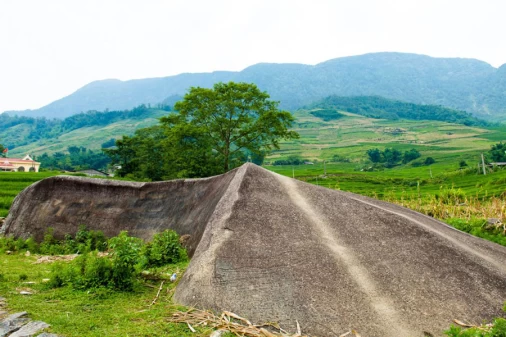
Ancient Rock Field
Sapa ancient carved rock spreads out on the territory of three communes of Ta Van, Hau Thao and Su Pan....
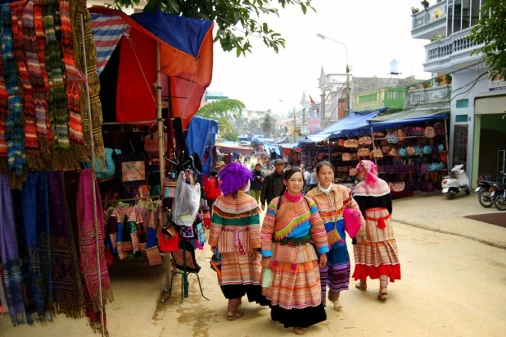
Bac Ha Market
Bac Ha Market is located in Bac Ha Town, Lao Cai Province, Sapa. The market is held every Sunday. This...
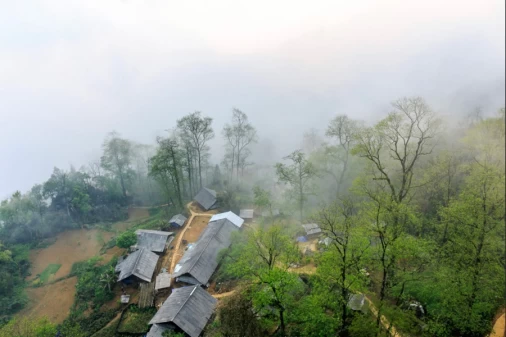
Ban Ho Village and the Hot Springs
At the end of the motor way about 25 Km from Sapa town lies a vast and flat valley, circled by mountains...
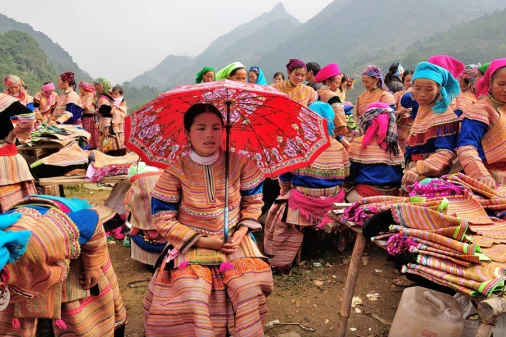
Can Cau Market
Sapa tours, any tourists are surprised by the bustling scenery of people who buy sellers of Can Cau...
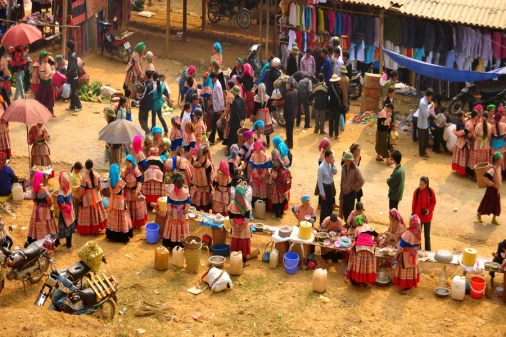
Cao Son area
Besides Sa Pa in Lao Cai and Tam Dao in Vinh Phuc, Cao Son area in Thanh Hoa (also known as Son Ba Muoi)...
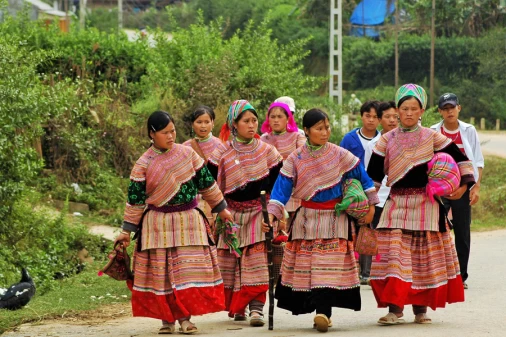
Coc Ly Market
Being a province in the Northwest Highlands, Lao Cai is famous for its unique markets bearing the national...
You may also like
Vietnam Insight 14 Days
- Depart Time:Daily
- Starts/Ends:Hanoi/Ho Chi Minh
- Tour type:Private Tours
- Travel Style:Nature & Adventure, Heritage Tours, Family Tours, Culture & History
- Activities:Adventure tours, Cruise tours, Sightseeing Tours, Cultural, religious and historic sites tours
- Suitable for:Family, Group, Couple
- Age range:1 To 90 Years
- Operated in:English, French, Spanish, German, Italian
Sapa Adventure Tour 4 Nights
- Depart Time:Daily
- Starts/Ends:Hanoi/Hanoi
- Tour type:Private Tours
- Travel Style:Nature & Adventure, Family Tours
- Activities:Trekking and Hiking, Sightseeing Tours, Countryside and village visits tours
- Suitable for:Solo, Family, Group, Couple
- Age range:1 To 90 Years
- Operated in:English, French, Spanish, German, Italian
Sapa Easy Trekking 3 Nights
- Depart Time:Daily
- Starts/Ends:Hanoi/Hanoi
- Tour type:Private Tours
- Travel Style:Nature & Adventure, Family Tours
- Activities:Trekking and Hiking, Sightseeing Tours, Countryside and village visits tours
- Suitable for:Solo, Family, Group, Couple
- Age range:1 To 90 Years
- Operated in:English, French, Spanish, German, Italian
Sapa Eco Trekking 3 Nights
- Depart Time:Daily
- Starts/Ends:Hanoi/Hanoi
- Tour type:Private Tours
- Travel Style:Nature & Adventure, Family Tours
- Activities:sightseeing tours, Trekking and Hiking, Countryside and village visits tours
- Suitable for:Solo, Family, Group, Couple
- Age range:1 To 90 Years
- Operated in:English, French, Spanish, German, Italian
Sapa Experience daily Life 4 Nights
- Depart Time:Daily
- Starts/Ends:Hanoi/Hanoi
- Tour type:Private Tours
- Age range:1 To 90 Years
- Operated in:English, French, Spanish, German, Italian
Sapa Homestay Experience 3 Nights
- Depart Time:Daily
- Starts/Ends:Hanoi/Hanoi
- Tour type:Private Tours
- Travel Style:Nature & Adventure, Family Tours
- Activities:Trekking and Hiking, Countryside and village visits tours
- Suitable for:Solo, Family, Group, Couple
- Age range:1 To 90 Years
- Operated in:English, French, Spanish, German, Italian
7-Day Authentic Northern Vietnam
- Depart Time:Daily
- Starts/Ends:Hanoi/Hanoi
- Tour type:Private Tours
- Travel Style:Nature & Adventure, Family Tours
- Activities:Adventure tours, Cruise tours, Countryside and village visits tours
- Suitable for:Solo, Family, Group, Couple
- Age range:1 To 90 Years
- Operated in:English, French, Spanish, German, Italian
Unique Sapa Tours 3 Nights
- Depart Time:Daily
- Starts/Ends:Hanoi/Hanoi
- Tour type:Private Tours
- Travel Style:Nature & Adventure
- Activities:Trekking and Hiking, Sightseeing Tours
- Suitable for:Solo, Family, Group, Couple
- Age range:1 To 90 Years
- Operated in:English, French, Spanish, German, Italian
 France
France  Spain
Spain  German
German  Italian
Italian 









 Vietnam Tours
Vietnam Tours  Cambodia Tours
Cambodia Tours  Myanmar tours
Myanmar tours  Thailand Tours
Thailand Tours  Laos Tours
Laos Tours